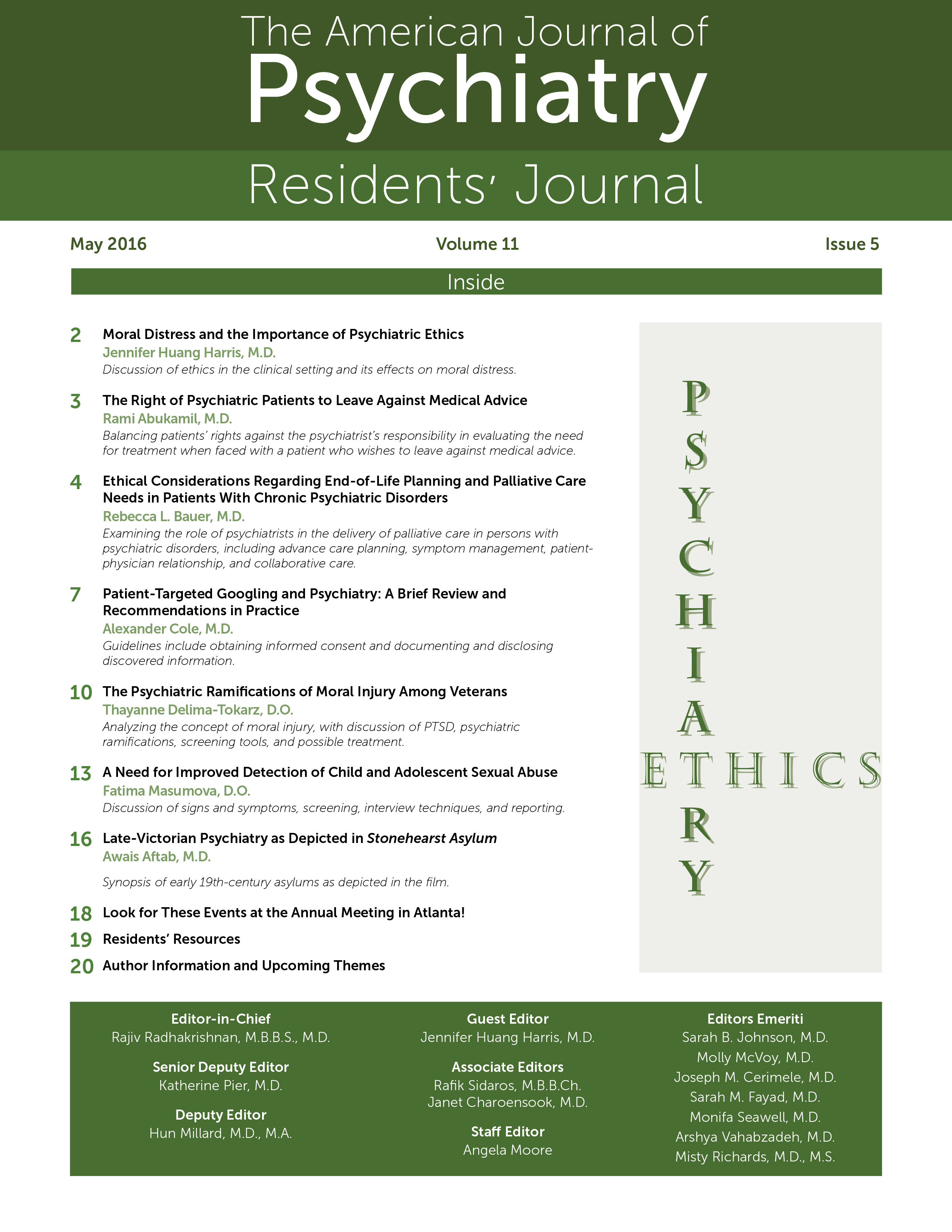Early 19th-century asylums witnessed a revolutionary break from the treatment of mentally ill individuals in “traditional madhouses.” “Moral treatment” evolved from the belief that if institutions could provide comfort and structure, the environment itself could be curative. Popularized by reformers, such as the Tuke family in England and Pinel in France, moral treatment soon became the gold standard (
1). In the mid-19th century onward, numerous county asylums were built in England as a result of the political pressure of the reformers. The idealistic vision of asylum reform, however, collapsed in the coming decades, under the influence of industrialization, urbanization, and significant increase in birth rates, all of which resulted in a steep increase in the number of mentally ill individuals (
1,
2). The asylums were overcrowded, cramped, squalid places, filled with “an assorted rag-bag of social misfits” (
2), while being understaffed and underfunded. At the same time, psychiatrists were utilizing various physical treatments. Douche, cold and hot baths, static electricity, massages, injections of testicular fluids, and primitive psychotropics, such as bromide, paraldehyde, and chloral hydrate, were common treatments (
2,
3). This was the condition of asylum medicine in the late Victorian era, excellently portrayed in the 2014 film
Stonehearst Asylum, by director Brad Anderson.
In the film, Dr. Newgate arrives at Stonehearst Asylum, seeking training in alienism (as psychiatry was called at that time) under the superintendent Dr. Lamb. It soon becomes obvious to him that Dr. Lamb’s practice of psychiatry is highly unorthodox. Patients roam freely, do not receive psychiatric treatments, and their delusions are even encouraged. Patients also interact freely with the asylum staff, and Newgate often finds it difficult to distinguish one from the other.
Hints that something is amiss accumulate; Newgate comes to suspect that the psychiatrically ill patients have seized control of the asylum and are posing as the staff. Newgate discovers that the original keepers, along with the real superintendent Dr. Salt, are imprisoned in the asylum’s dungeon. As the surreal drama unfolds, we also become aware of the physical treatments the patients had been subjected to by Dr. Salt prior to the takeover, such as alternating cold and hot showers and rotating chairs, reflecting commonplace psychiatric practices of that era (
2,
4).
The film does an excellent job of replicating the late Victorian epoch in the history of British psychiatry (
2), whether it is the monolithic approach to “madness,” use of old-fashioned diagnoses like hysteria, neurasthenia, and dementia praecox, or the physically brutal treatments.
Stonehearst Asylum provides psychiatry residents an invaluable glimpse into this early history by depicting the state of asylums, the aspirations of moral treatment, and biological psychiatry in its infancy. It also reinforces the modern-day respect for patient autonomy and existing thresholds for involuntary commitment and involuntary treatment. The contrast between the early biological psychiatry and the idealism of moral treatment is representative of a fierce debate of that age. This debate shaped the subsequent historical development of psychiatry and continues to exist within contemporary psychiatry in subtle and modified ways (
5).
